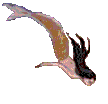Sunken and buried treasures in a remote Pacific island
The Bremen barque "Libelle"
By Pascal Kainic
Disastrous event on an uninhabited Island
Intelligence has been received from Hong Kong of the total loss of the Bremen barque "Libelle", Captain Tobias, while on a voyage to that port from San Francisco, having on board a valuable cargo and specie to the amount of a little less than $ 100.000 and a number of passengers, among whom were Madame Anna Bishop, the wife of Sir Henry Bishop, the composer, Miss Phelan, Mr. Schultz and Mr. Charles Lascelles, the pianist of the English Opera Company, who, with other artists, were on a musical tour.
The barque was cast away on the night of 4th of March 1866, on an uninhabited and dangerous reef called Wake Island, in the China Seas. This is a low coral island, only eight feet above the water, with a lagoon in the centre. There are no trees or vegetation of any kind on it and it has the appearance of being at times submerged, just about half way between Honolulu and Hong Kong.
The passengers remained on board during the night, the sea breaking fearfully over the wreck. They were all landed with difficulty through the breakers the following day. After an ineffectual search over the island for water for three weeks, and suffering much privation, it became imperative to take to the boats and endeavour to reach the nearest safe and inhabited island.
Several days were spent in finding a suitable and safe point for departure, the breakers encircling the island, which appeared to be 20 miles in circumference. Taking such provisions and water as were saved from the wreck, the passengers were transferred to the ship’s long boat, in charge of the first mate, the Captain preferring another boat, and on the 27th of March both boats sailed for the Ladrone or the Mariana Islands.
To attempt a voyage of 1.400 miles, subject to equinoctial storms, calms, and a tropical sun with short rations and an ocean abounding with hidden rocks and coral reefs, gave but poor hopes of arriving at a port with life. However, after encountering great dangers and enduring horrible sufferings for 13 days and nights, the boat arrived off the town of Guam. An error in 6 degrees longitude had brought them off that place.
Every one in the boat was in a pitiable and forlorn condition. His Excellency Francisco M. Lara, Governor of the Mariana Islands, on being apprised of their landing, directed every help and succour to be afforded them. The poor creatures were loud in their expression of thanks for his hospitable conduct.
Nothing had been heard of the other boat containing the maser and he rest of the crew, up the departure of the last mail. They parted company on the first night after their departure from the island. Unless the boat was picked up by some chance vessel, it was apprehended it must have been swamped, as heavy cross seas were met with that night.
His Excellency has sent a schooner in search of the missing boat among the islands to the northward, with orders to proceed to the scene of the wreck and recover the specie. It had been saved from the wreck and had been buried for security in the island, on the beach.
But after searching for two days the location of the buried specie, only $ 30.000 were recovered; the quicksilver was not found, end the weather picking up, it was decided to head back to the Mariana Islands.
One year later, in August 1867, the schooner "Caroline Mills" was sent from San Francisco to try to save the cargo of the "Libelle". She was able to find the wreck amongst the coral reefs, but could only save a few flasks of quicksilver, and finally had to abort the expedition.
On 29th of December 1934, a presidential order placed Wake Island under the jurisdiction of the U.S Navy Department and during the Second World War, it was one of the most strategically utilised islands in the Pacific. An elaborate commercial air station had been functioning and millions of dollars had been spent in a rush naval development.
The lonely spot had borne many names during its history. The present one is for Captain Wake, of the British trading schooner "Prince William Henry", who is generally looked upon as its discoverer in 1796. The Spaniards, however, knew of its existence more than 200 years before, as the place lay almost on the return route of the treasure ship plying between Mexico and the Philippines.
Besides the specie noticed above, the cargo of the "Libelle" consisted 1000 flasks of quicksilver, 30 packages of hardware, 1000 barrels of flour, 2000 bushels of wheat and a few other articles valued altogether at over $ 50.000 From this port, she took $ 8.100 in specie and some 10.000 of copper. Madame Bishop was over 50 years old at the time and lost a life's accumulation of jewels, music instruments, costumes etc...
The "Libelle's" well-rusted anchor chains and some lava ballast could still be seen before the Second World War, on a windward reef and another anchor was set upright in cement near a hotel.

Comments
-

- 1. tim On 03/03/2009
I just stumbled on researching the history of wake island and saw your post. Fascinating story. I want to go find the treasure remains! March 4 is approaching the anniversary of their wreck. -

- 2. Lorna On 02/02/2009
Lady Anna Riviere Bishop was my great great great Grandmother. (Sir Henry Rowley Bishop)
It is wonderful to be able to discover the interesting details of her history and adventures.
Thankyou!
Add a comment